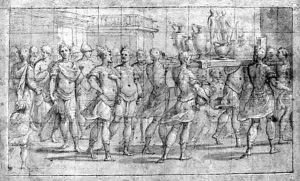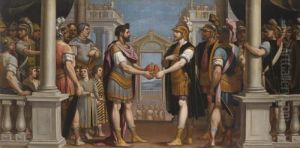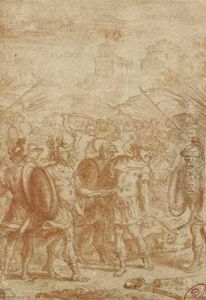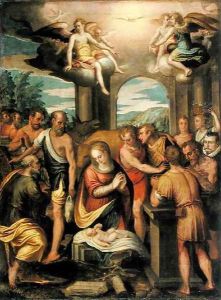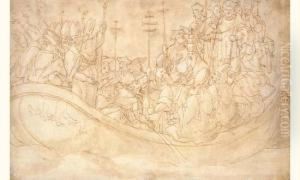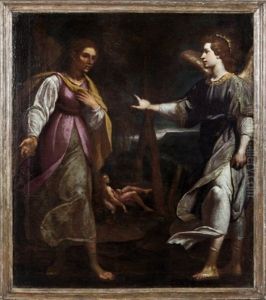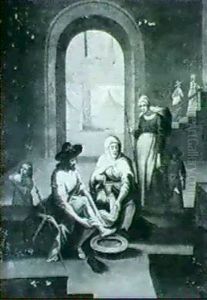Bernardo Castello Paintings
Bernardo Castello was an Italian painter who played a significant role in the late Renaissance and early Baroque periods. Born in Genoa in 1557, Castello is often remembered for his intricate and detailed work that often depicted religious and mythological scenes. He was deeply influenced by the artistic styles that were prominent in Genoa during the late 16th century, which included the works of Luca Cambiaso and Giovanni Battista Paggi.
Castello began his artistic training at a young age and quickly established himself as a talented painter. His works were characterized by their vivid colors, dynamic compositions, and attention to detail. Throughout his career, he received a number of important commissions from churches and noble families in Genoa, which contributed to his reputation as one of the leading artists of his time.
One of his most notable works is the decoration of the Palazzo Sauli in Genoa, which he completed with his brother Lazzaro Castello. He also contributed to the decoration of the Genoa Cathedral and the Church of San Matteo. In addition to religious and mythological subjects, Castello was also known for his portraiture, although fewer of these works have survived.
Bernardo Castello's influence extended beyond his own works through his role as a teacher. He trained several artists who would go on to become prominent figures in the Genoese and Italian art scenes. Despite his success, there is still much about his life that remains obscure, and many of his works have been lost or are attributed to other artists from the same period.
He died in Genoa in 1629, leaving behind a legacy that would influence the development of the Genoese art school and contribute to the city's cultural history. His works continue to be studied and appreciated for their contribution to the transition between Renaissance art and the emerging Baroque style.
